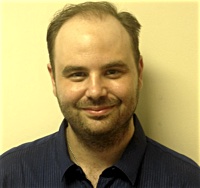A Transdiagnostic Approach to Treating Sleep Problems in Clinical Practice: Basics & Beyond (With CE)
$40.00
Description
Presenter: Dr. Allison Harvey
Overview: Sleep and circadian problems are among the most prevalent problems, undermining our emotional functioning, health, cognition, and contributing to behavioral problems. Much research on sleep and circadian problems has been disorder-focused; however, real life sleep and circadian problems are not so neatly categorized. Insomnia often overlaps with hypersomnia, delayed sleep phase and irregular sleep-wake schedules, an observation that motivated us to develop the Transdiagnostic Sleep and Circadian Intervention (TranS-C). The goal of TranS-C is to provide a treatment approach for a variety of sleep problems comorbid with a variety of psychological and physical disorders, and that can be used confidently by a variety of mental health professionals. TranS-C combines CBT-I (e.g., Morin et al., 2006) with elements from existing evidence-based treatments: Interpersonal and Social Rhythm Therapy (Frank et al., 2005), chronotherapy (Wirz-Justice et al. 2009) and Motivational Enhancement (Miller & Rollnick, 2012). TranS-C is a modular approach to reversing and maintaining psychosocial, behavioral and cognitive processes via 4 cross-cutting modules, 4 core modules and 7 optional modules. The four Cross Cutting Modules are: case formulation; education; behavior change and motivation; goal setting. The four Core Modules are: establishing regular sleep-wake times including learning a wind-down and wake-up routine; improving daytime functioning; correcting unhelpful sleep-related beliefs; and maintenance of behavior change. The Optional Modules are: improving sleep efficiency; reducing time in bed; dealing with delayed or advanced phase; reducing sleep-related worry/vigilance; promoting compliance with CPAP/exposure therapy for claustrophobic reactions to CPAP; negotiating sleep in a complicated environment and reducing nightmares.
Objectives:
- Summarize the rationale for and theoretical underpinnings of TranS-C
- Utilize/apply the cross-cutting modules of TranS-C
- Utilize/apply the core modules of TranS-C
- Obtain knowledge as to the availability of the optional modules of TranS-C






Reviews
There are no reviews yet.